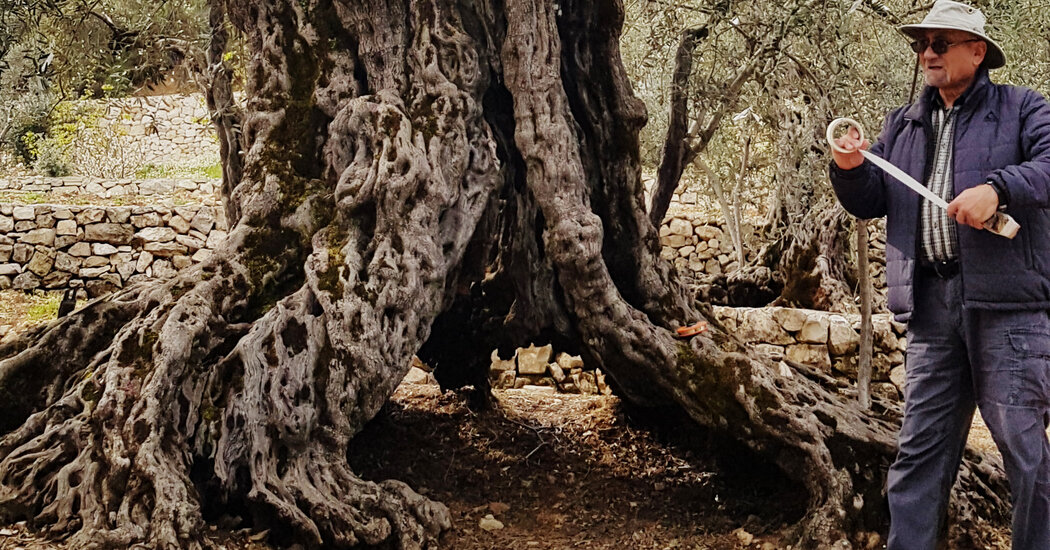While the sentinel trees of Northern Lebanon may not be as old as some traditions hold, one tree might be more than 1,000 years old.
Olive trees are common in Northern Lebanon, but in the village of Bshaaleh, a handful look downright ancient. Their branches grow in wildly unpredictable directions, and the trees’ gray, gnarled trunks are shot through with holes and crevasses large enough to hide a sleeping child. Many people believe these sentinel trees are thousands of years old. They are known as “Noah trees” because of some people’s belief that the trees are the source of the olive branch carried by the dove back to Noah’s ark.
Scientists have now established a more certain age for several of the trees of Bshaaleh (also spelled Bchaaleh) and found that most are about 500 years old. But one, a behemoth measuring roughly 14 feet in diameter, is more than 1,100 years old. That’s the oldest olive tree in the world, the team reported last month in the journal Dendrochronologia.
Not many other large olive trees have been reliably dated, despite the cultural, spiritual and economic importance of such trees in places such as the Mediterranean. Scientifically determining the ages of olive trees is challenging, said J. Julio Camarero, a dendrochronologist at the Pyrenean Institute of Ecology in Zaragoza, Spain, who led the study of the Bshaaleh trees. That’s because these trees often lack regular growth rings, he said. “The rings are not easy to see.”
Most species of trees form annual growth rings. Researchers can count the number of rings in samples of wood extracted from living specimens and precisely determine a tree’s age. That practice has spawned an entire subfield of scientific inquiry known as dendrochronology. Investigations based in large part on analyzing tree rings have shed light on, for example, the timing of the arrival of the Vikings in what is now Newfoundland, and the craftsmanship of Antonio Stradivari, the Italian artisan renowned for his stringed instruments.
But olive trees — which scientists have previously shown can live hundreds of years — often have irregular or even missing annual growth rings. Furthermore, older olive trees can exhibit multiple trunks, hollowed-out interiors and other vagaries of growth that make it difficult to determine their ages. Even professional tree-ring scientists have trouble with olive trees: An earlier study showed that when different tree-ring laboratories received samples of wood from the same olive trees, the labs reported tree-ring numbers that varied by as much as a factor of three.
